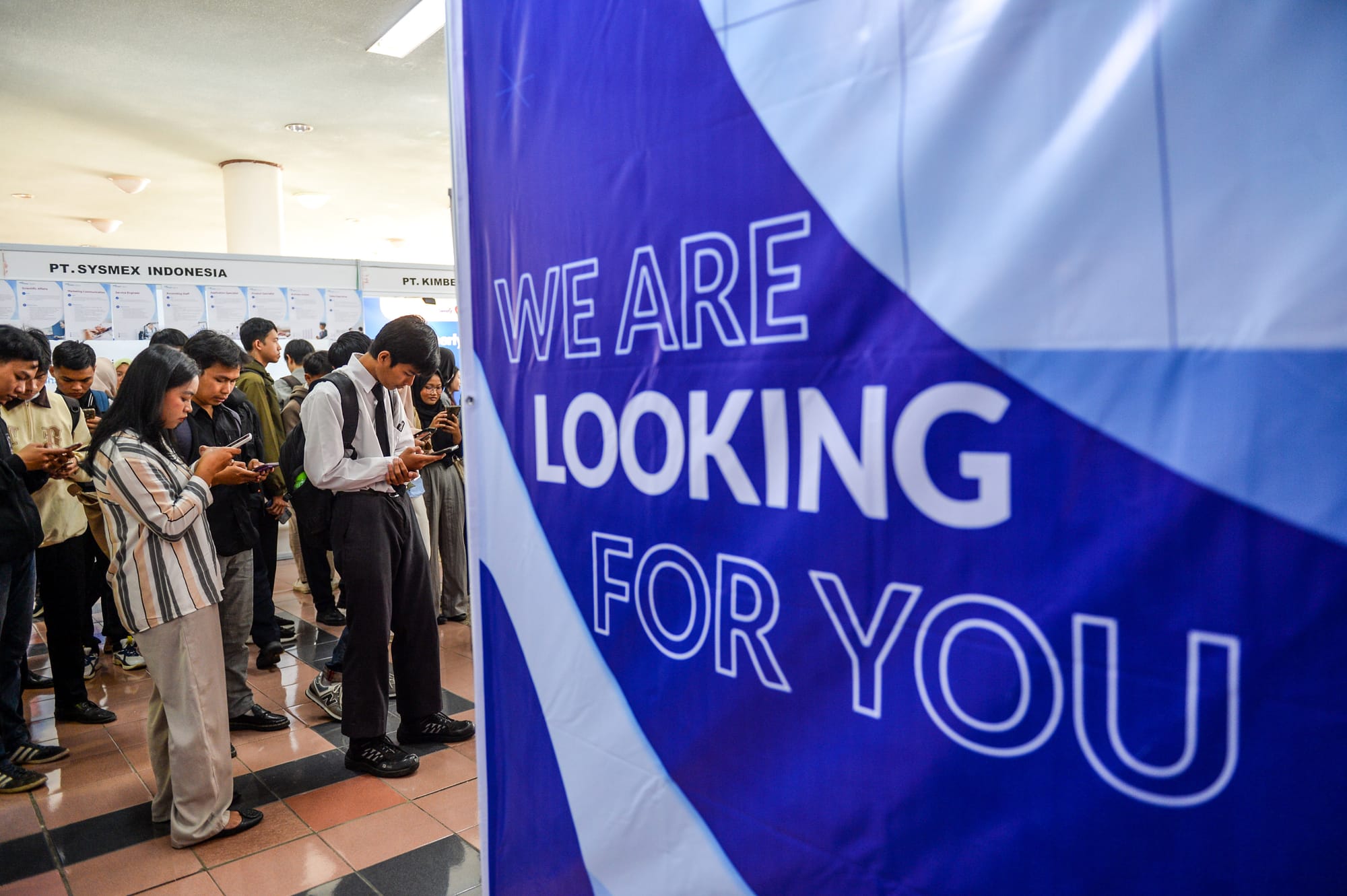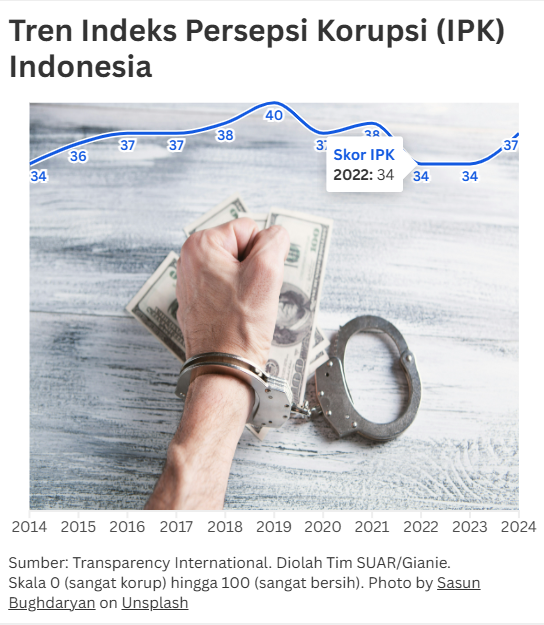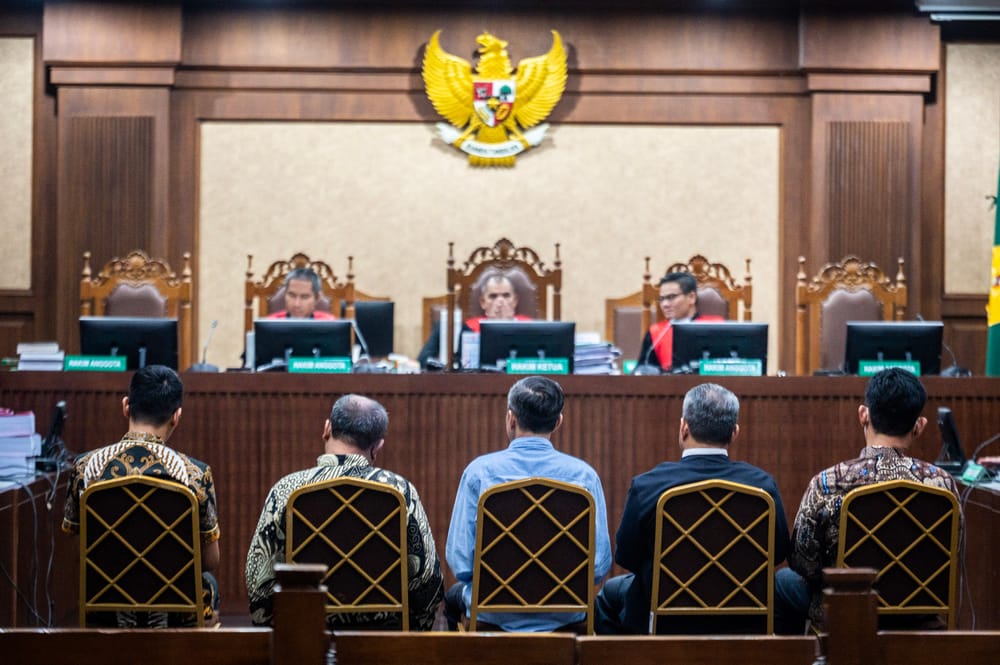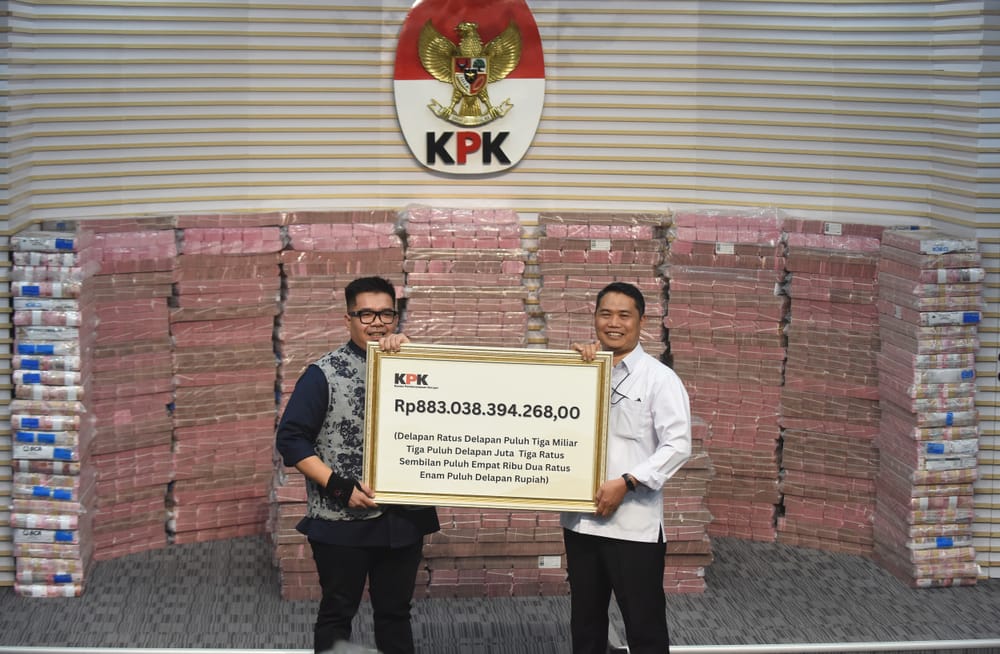The SUAR team explored the thoughts of decision-makers, company leaders, and economic observers regarding the increasingly difficult conditions for the Indonesian middle class to prosper through the Semesta Dunia Usaha Survey.
Highlight:
- The population categorized as middle class in Indonesia has not yet achieved a prosperous status (76.3%). The reasons include low purchasing power (44.8%) and limited savings (24.1%).
- This middle-class group also still finds it difficult to obtain formal employment and a decent income (89.5%).
- This middle-class group has not received adequate attention from the government (76.3%).
- Policies considered to help the middle class become more prosperous include providing formal employment opportunities (31.6%) and providing incentives or tax breaks (26.3%).
- The government needs to expand the scope of social protection so that it does not only target poor groups, but also the middle class.
Before the Covid-19 pandemic struck in 2020, Indonesia grew as one of the countries with a promising economy. For more than 50 years, the Indonesian economy grew by an average of 5.6% per year. By 2019, Indonesia's per capita income had reached 4,106 US dollars (USD). The poverty rate was also successfully suppressed to 9.2%.
In line with that, Indonesia's middle class group also developed. In 2019, data from the Central Statistics Agency (BPS) showed that one in five Indonesians belonged to the middle class group. The number was 57.33 million people or 21.45%.
Poor (poor) and vulnerable to poverty (vulnerable) residents who managed to escape poverty did not directly move up to the middle class group, but entered the aspiring middle class group. At that time, the number was around 115 million people. If the economy continues to improve, they will move up a class.
This middle class group is the main driving force behind Indonesia's economic growth, especially in terms of consumption. Consumption in this group has grown 12% per year since 2002 and represents almost half of all household consumption in Indonesia.
The middle class with high education and skills is also able to create jobs.
The middle class group is generally a population with better education and skills. They usually work as white-collar workers in the formal sector and mostly live in urban areas. With high levels of education and skills, quite a few then run their own businesses or become entrepreneurs. So, they also create jobs for other people.
With such great potential from the middle class, Indonesia's hopes of becoming advanced are wide open. Unfortunately, the Covid-19 pandemic shattered these hopes. In 2020, the number of middle class people decreased along with a decrease in per capita income. The poverty rate also increased again.
Since then, the number of middle class people has gradually decreased. In 2021, the number was 53.83 million people (19.82%). In the following years, the number continued to shrink until 2024 to 47.85 million people (17.13%). This decline was followed by a decrease in the number of people working in the formal sector.
Before the pandemic, the number of people working in the formal sector based on BPS data was 44.12% of the total working population. Due to the pandemic, in 2020 the number of workers in the formal sector fell to 39.53%. After the economy began to recover from the pandemic, the number working in the formal sector also increased. Unfortunately, the increase was very slow, so the condition has not returned to what it was before the pandemic. In 2024, the number of people working in the formal sector was 42.05%.
Middle class still struggles to prosper
BPS uses the World Bank's reference in grouping residents based on expenditure. The middle class group is a household whose monthly expenditure ranges from 3.5–17 times the poverty line figure. With the 2024 poverty line of Rp 595,242 (September), the expenditure of the Indonesian middle class group ranges from Rp 2 million–Rp 10 million per capita per month.
Meanwhile, the aspiring middle class group is a group with an expenditure of 1.5-3.5 times the poverty line or ranging from Rp 900,000–Rp 2 million per capita per month.
With this amount of expenditure, the Indonesian middle class group, according to many economists, is a group that is still far from prosperous. The reason is that the amount of household income with middle class status is usually relatively the same as expenditure. So, they find it difficult to save. The largest expenditure of this group is usually for food consumption, paying taxes, children's education costs, and housing installments.
The portrait of a middle class that is struggling to prosper is also reinforced by a survey conducted by the SUAR Team.
According to the majority of survey respondents, Indonesia's middle class population is not yet prosperous (76.3%). The reasons are low purchasing power (44.8%) and limited savings (24.1%). Instead of becoming prosperous and moving towards high-income status, Indonesia's middle class is forced to live in a phenomenon of “mantab”, which means living off their savings.
A number of other reasons have also emerged, such as many still working in the informal sector, the condition of some people who find it difficult to get higher education, a lot of economic pressure, and minimal attention from the government.
The lack of government attention to the middle class population can be seen from this group which is not protected by social security and does not receive social assistance because it does not meet the criteria. In addition, they also face an economic burden due to tax increases.
Since April 1, 2022, the government has increased the Value Added Tax (VAT) from 10% to 11% to increase state revenue. The government gradually plans to increase the VAT rate. Initially, it was planned that there would be a VAT increase to 12% as of January 1, 2025, although it was later canceled by order of the president.
Law Number 7 of 2021 concerning Harmonization of Tax Regulations in Article 7 paragraph (3) explains that the central government can change the VAT rate up to a maximum of 15%.
The government's step to increase VAT is based on Law Number 7 of 2021 concerning Harmonization of Tax Regulations. Article 7 paragraph (3) even explains that the central government can change the VAT rate up to a maximum limit of 15% and a minimum of 5%. The implementation will be regulated through a Government Regulation.
The economic pressure experienced by the middle class due to the lack of government attention is also evident from this group's vulnerability to price increases, especially food prices. The largest portion of consumption for the lower middle class and the poor is food, especially rice. An increase in the price of rice, which is usually followed by the prices of other necessities, will further burden the lives of the middle class.
High inflation is further eroding the purchasing power of the middle class, whose income is limited. The small income of the middle class is due to their limited access to jobs in the formal sector.
This was also acknowledged by survey respondents. The majority of respondents agreed that middle-class residents find it difficult to obtain formal employment and decent incomes (89.5%). This condition is inseparable from the large number of workers who have experienced layoffs in the past year.
The decline in the number of Indonesia's middle class since the pandemic until now actually signals that the government's work has not focused on the group that is the engine of economic growth. In fact, the government is targeting economic growth of up to 8%.
If government policies are not directed at improving the condition of the middle class, then the wheel that will drive the economy will work harder. Therefore, a special strategy is needed to prevent the middle class from falling into a lower class.
Helping the middle class
According to respondent sources, policies that are considered to help the middle class become more prosperous include providing formal employment opportunities (31.6%) and providing incentives or tax breaks (26.3%).
The creation of jobs in the formal sector will absorb more labor and provide better incomes. This will increase people's purchasing power. Food price stability also needs to be maintained by ensuring the smooth availability of supplies, so that consumption can vary, not solely for food needs.
Increased public consumption will certainly drive the economy so that growth can be high. However, conditions that have just improved should not be burdened with tax increases. There needs to be room for the middle class to save so that asset accumulation occurs. Thus, gradually the condition of the middle class will improve and become prosperous.
As many as 10.5% of respondents believe that the middle class also needs to receive social assistance and food/non-food subsidies, as is the case for the poor. This policy must of course be adjusted to the government's financial condition because it will be related to the allocation of budget spending.
In addition, middle-class residents also need to get training and self-development programs (7.9%). This is so that they have a high bargaining position and can expand access to getting jobs in the formal sector.
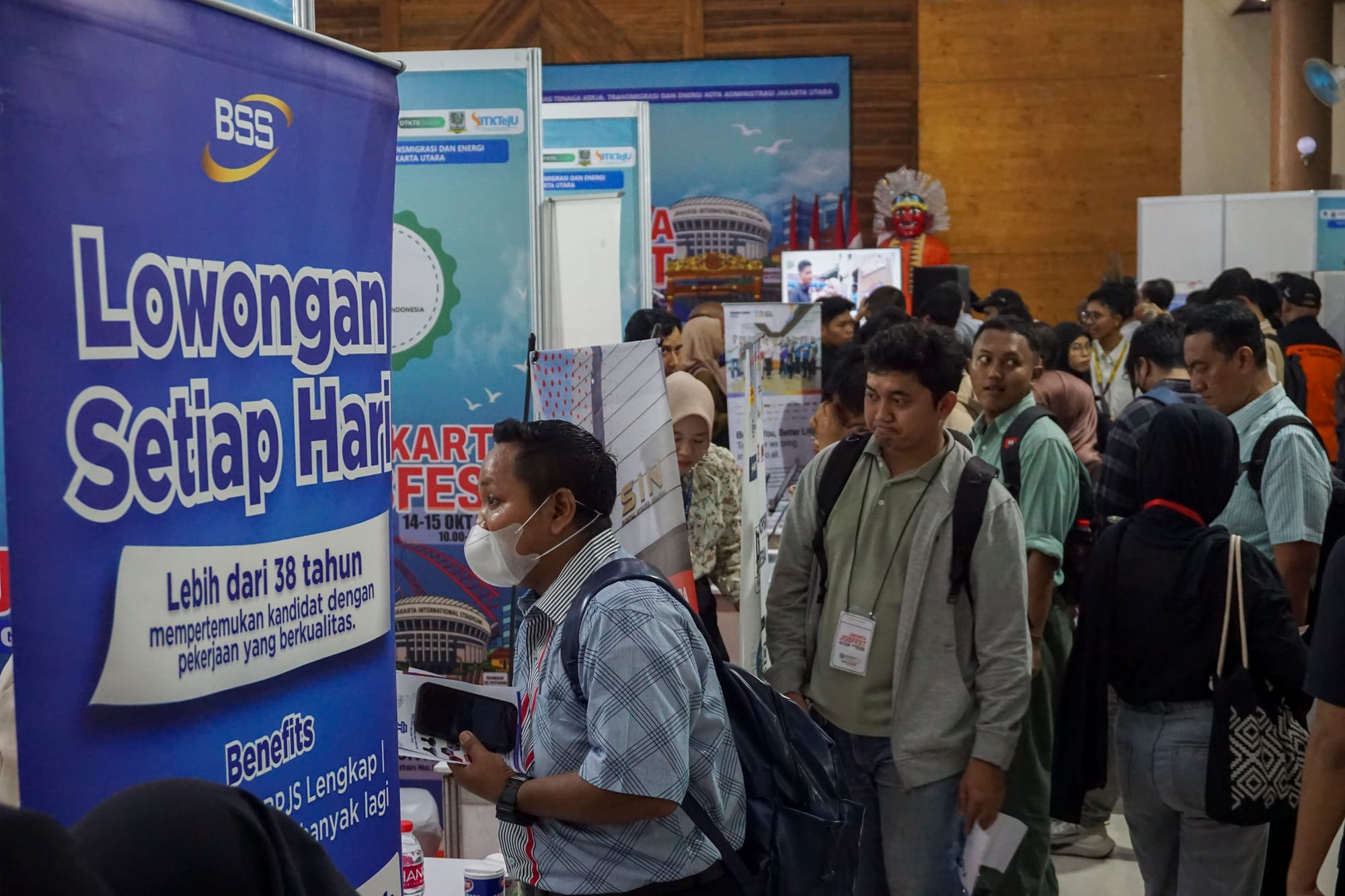
Methodology and respondent profile
The Semesta Dunia Usaha survey was conducted on September 9–25, 2025. A total of 38 sources (respondents) were selected by purpossive sampling from the business world and economic observers. From the business world, the positions of the sources varied, from director, president director, to owner.
In terms of education, most of the respondents have a bachelor's degree (50%) and postgraduate S2/S3 (42.1%).
Author: Gianie

